Phytoremediation as a Design Approach
Disintegration and remediation – shifting spaces from private industrial to public recreational.
As former industrialised sites become abandonded/defunct, what else could they be used for? Brownfield redevelopment relies heavily on phytoremediation, generally making the land safe again as the site moves from one use to the next, often built over once again. If phytoremediation were to be used to turn an industrial site into open space for a community, how would it work?
This project allows the original use of the site to be remembered / acknowledged as the community and the local ecosystem slowly rehabilitate the area. The staged remediation is a complex approach, breaking down the barriers between public and private space and allowing a visible understanding of what remediation means. The community sees the evolution rather than being presented with a final unrecognisable “new” space. Additionally, the materials are left on site to become part of the system, materially, chemically and structurally. The old fuel tanks are integrated, not rolled away and put out of sight.
The perception shift that this project involves is quite complex and challenges existing notions of public rights to a particular kind of recreational space.
Images
-
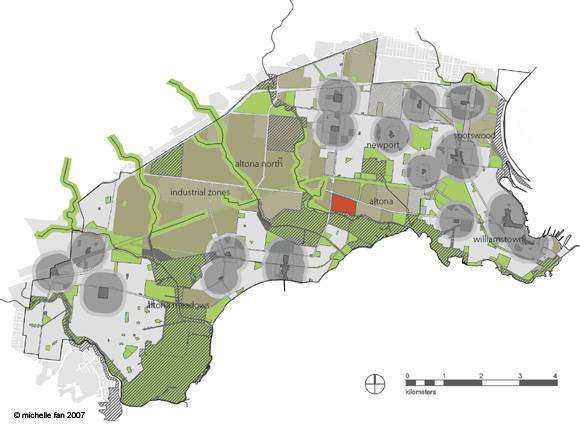
Current Site-Map -

Shell Site: Present Layout -

Shell Newport Visual Permeability -
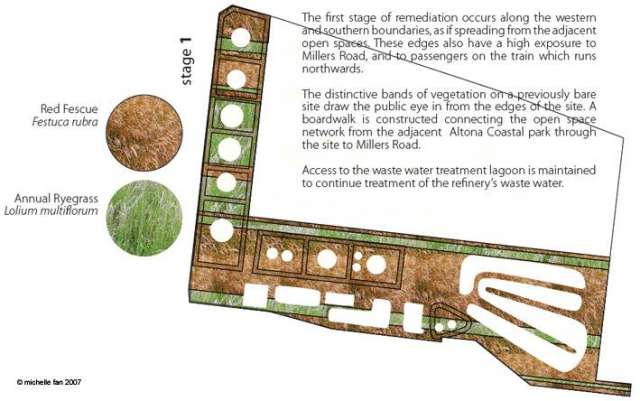
Planting Stage 1 -
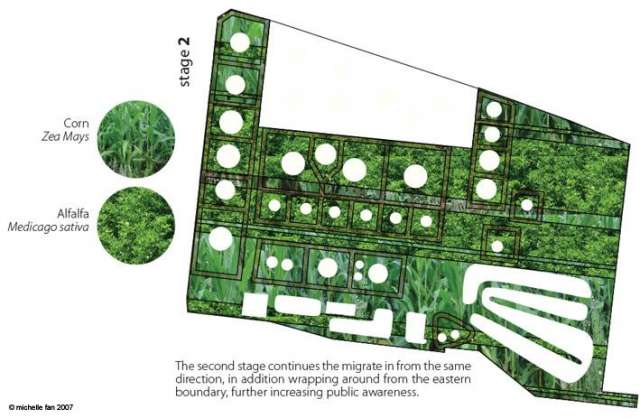
Planting Stage 2 -
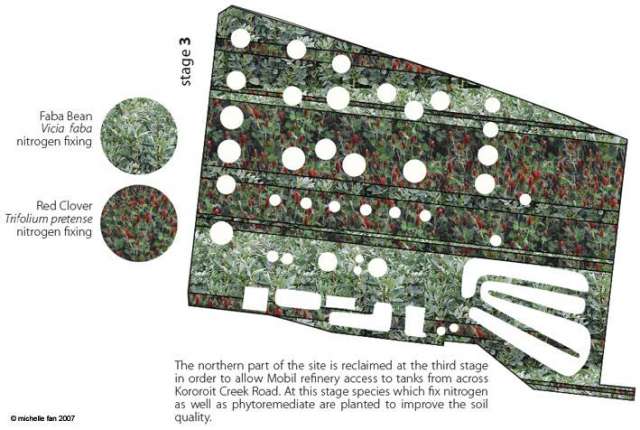
Planting Stage 3 -
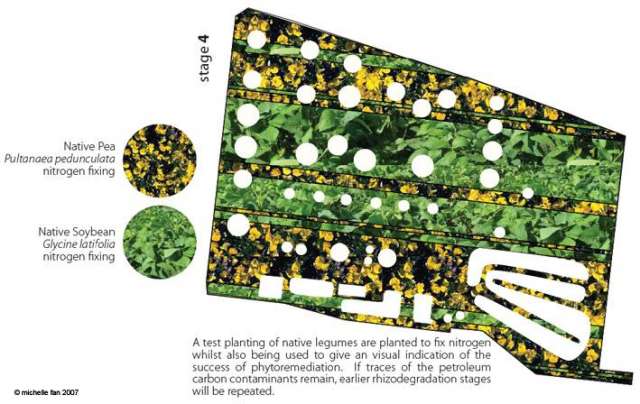
Planting Stage 4 -
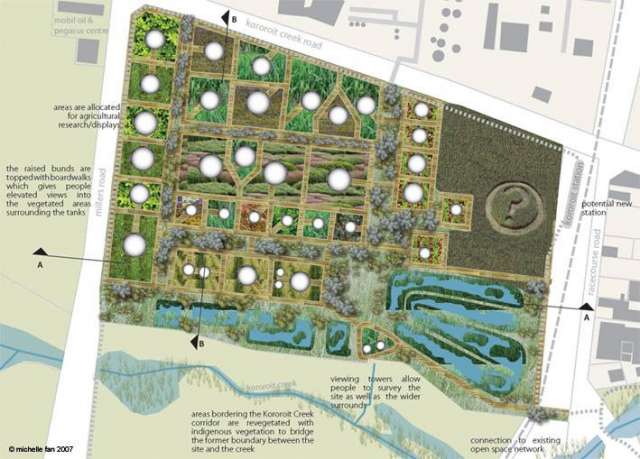
Revegetation Layout of Former Industrial Site -
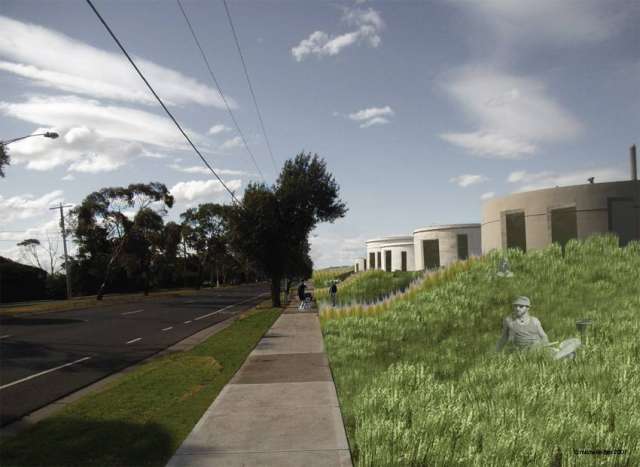
Stage 1: Millers Rd Boundary -

Visual Permeability Stage 1 -
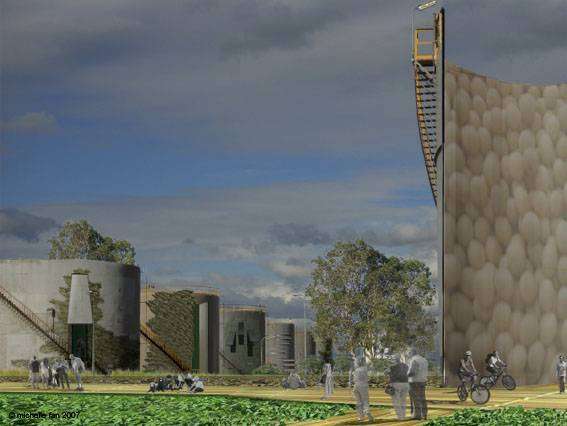
Phytoremediation Complete -
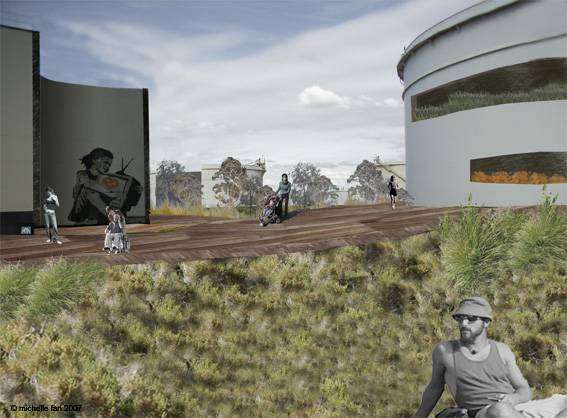
Stage N: Remediation Complete East from Millers Rd 1 -
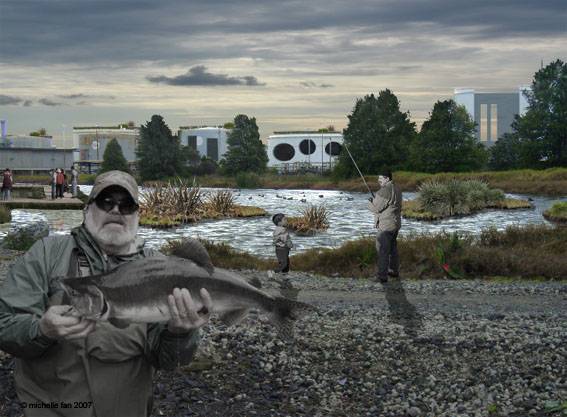
Fishing -

Disintegration Stages of Tanks - Line Drawings -
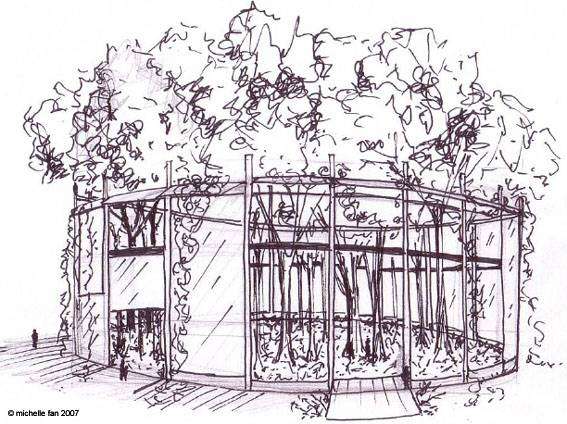
Tank Evolution -

Reconfiguring the Tanks Roof - No Walls -

Reconfiguring the Tanks Roof - Walls and Roof -

Possible Permutations: Square -

Possible Permutations: Round -

Possible Permutations: Forest
Designer
Michelle Fan
Domain
Landscape Architecture
Studio
Studio Leader
Dr Sidh Sintusingha